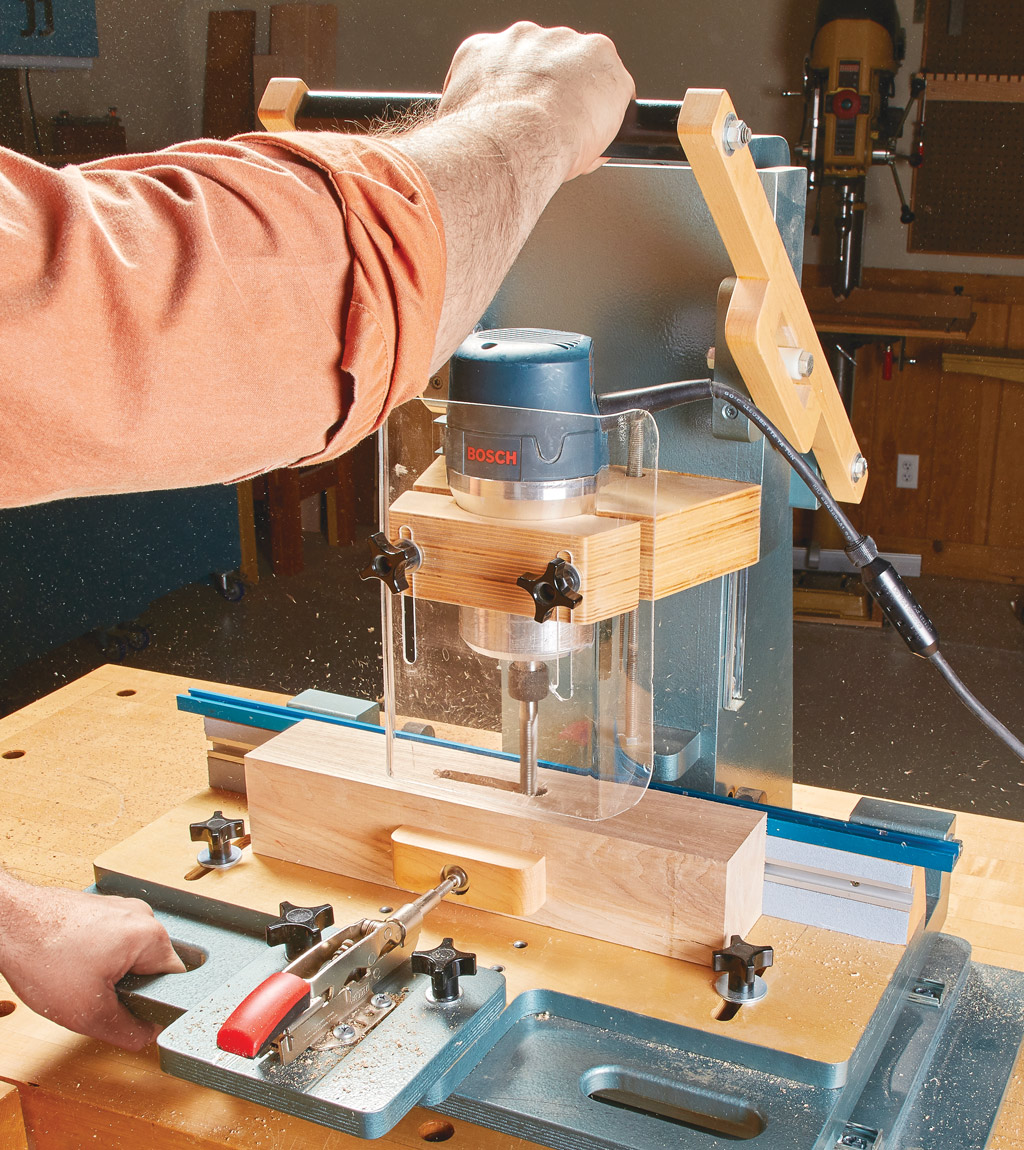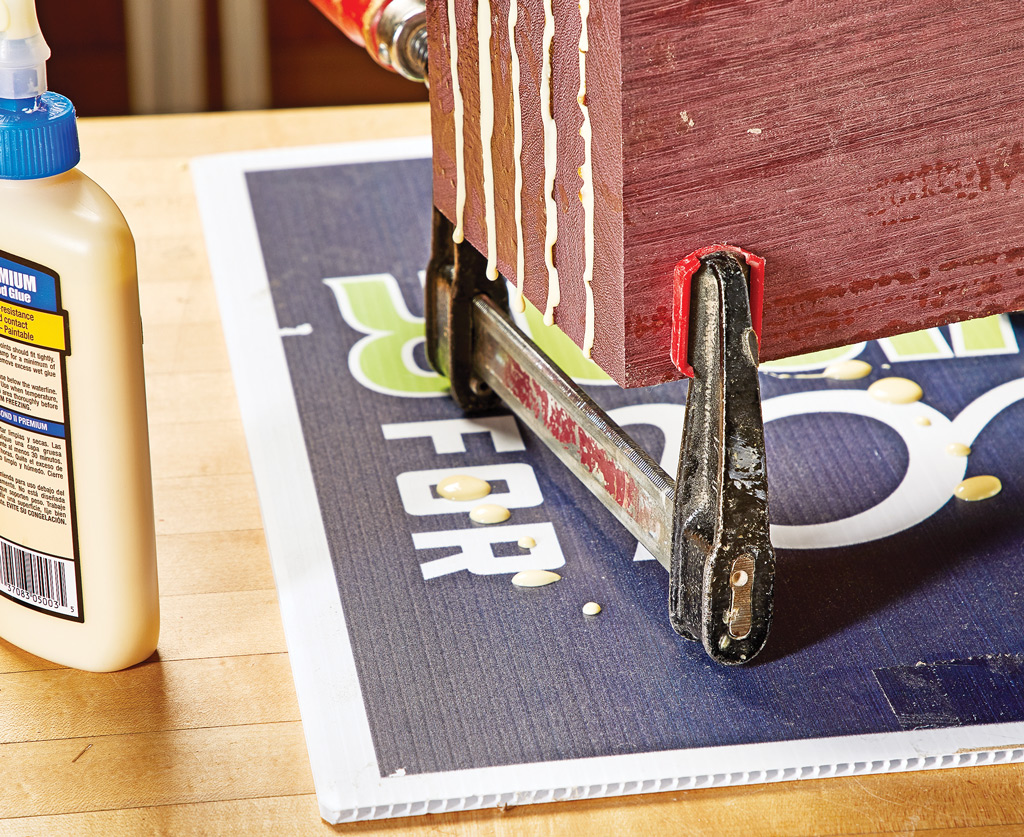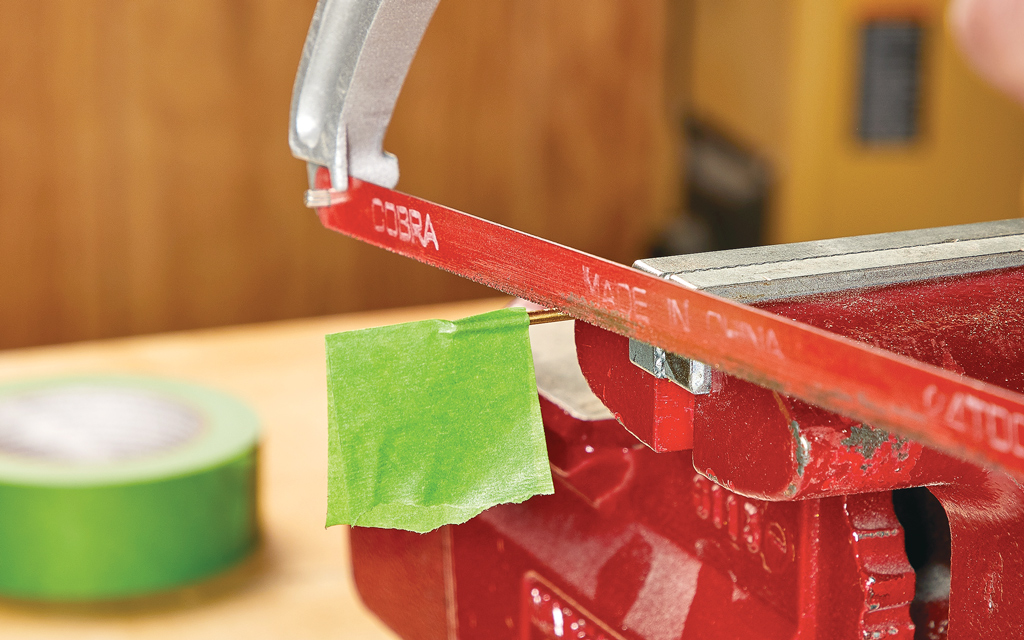
Mention hot glue guns to a group of woodworkers and you're likely to get some raised eyebrows. That's because glue guns are often thought of as "craft" tools. And while they may not be suitable for actual assembly of projects, they still have a number of uses in a woodworking shop.
HOW THEY WORK. Glue guns are generally pretty simple tools. An electrical current heats the metal tip of the gun which melts a stick of glue. Most have a trigger that pushes a glue stick through the gun. Hot glue is dispensed, but it cools and sets up within seconds.

WATTAGE & TEMPERATURE. When selecting a glue gun, you'll find a wide range of temperatures and wattages to choose from. Low-temp guns operate around 250°, and are geared more toward craft applications. The high temperature guns operate at 370° and higher. You can also find guns with dual or variable temperature settings. The higher the wattage of the gun, the faster the glue will melt. This means you don't have to wait as long for the gun to heat up before you can get to work.
TIPS. Aside from temperature, the other variance I found in glue guns is the tip style. Most tips are aluminum, but there are a few guns that have a replaceable brass tip (far right gun, above). This could be an advantage if you want to spend a little extra for a gun that will last longer. A fine-point tip could also be useful (far left gun, above). The smaller tip allows the glue to be applied in very small drops or thin lines. And it makes it easier to apply glue in tight corners.

TYPES OF GLUE. Just as there are different glue guns, there are different types of glue too (photo above). The most common type of glue is a clear, general purpose. It's used a lot in craft applications because it has a low melting point and won't damage fragile materials like paper or cloth.
High-temperature glue sticks will only melt at temperatures over 350°. They have greater holding power than the low temperature glues, and a slightly longer open working time. They're a better choice for gluing hard surface materials like wood, metal, and ceramic.

A few dots of hot glue holds a routing template firmly in place, and is easily removed.
There are also glue sticks designed specifically for use on wood. This glue has a lower viscosity than other types of hot glue, so it penetrates into the pores of the wood for better grabbing power. It's also tinted to be less noticeable.

Using hot glue to attach a stop block to a fence provides a solid, temporary joint without the need for cumbersome clamps.
CLAMPING. The task I use hot glue for the most is clamping. For example, a couple of dabs of hot glue on the ends of a curved workpiece that otherwise couldn't be clamped tight, will hold the workpiece in place while the conventional wood glue dries.

Hot glue will bond dissimilar materials, such as polyester batting to plywood.
NON-WOOD MATERIALS. Hot glue is also good for gluing non-wood materials to a project. For example, I use hot glue for gluing felt or leather to the bottom of drawers or boxes. You can use general purpose glue with tacks or staples to hold fabric, batting, and foam (lower left photo).
TEMPORARY HOLD. You can also use hot glue when you need a fast, temporary hold. I use it for quickly attaching templates and stop blocks, or to hold a hinge in place while drilling screw holes (first photo). All it takes is a drop of glue about the size of the head of a pin. To break the hold, just give it a sideways rap with a mallet.
A glue gun is easy and quick. Best of all, you can buy a basic gun for just a few dollars. While it may not be the most used tool in your shop, it's still convenient to have around when the need arises.
Worth a Look: TiteBond HiPURformer

The glue guns shown above all use traditional glue sticks. But there's a fairly new type of glue gun that dispenses polyurethane glue. The glue for Tite-Bond's HiPURformer gun comes in a cartridge. The gun has a heating element inside that surrounds the tube of glue with heat supplied from a corded heating stand. In about 15 minutes, the glue in the cordless gun is ready to use.
The polyurethane glue is similar to the glue that is sold in bottles. But the heat from the gun means you don't have to activate it with water and you don't have the bubbly squeezeout to clean up.
PERMANENT BOND. The reason this polyurethane glue doesn't need water to activate it is because the adhesive reacts with the moisture in the wood to form an extremely strong chemical and mechanical bond. The adhesive penetrates the wood and creates a "chain" with the substrate and adhesive to make a bond.
SETUP TIME. Four types of glue are available with set-up times from 30 seconds to five minutes. The longer time allows you to fine-tune the joint alignment.
WOOD TO WOOD. All the glue formulas will bond wood to wood and other common materials like plastic, leather, and fabric. And the glue is water resistant and weatherproof, so you can use it for outdoor projects as well.













